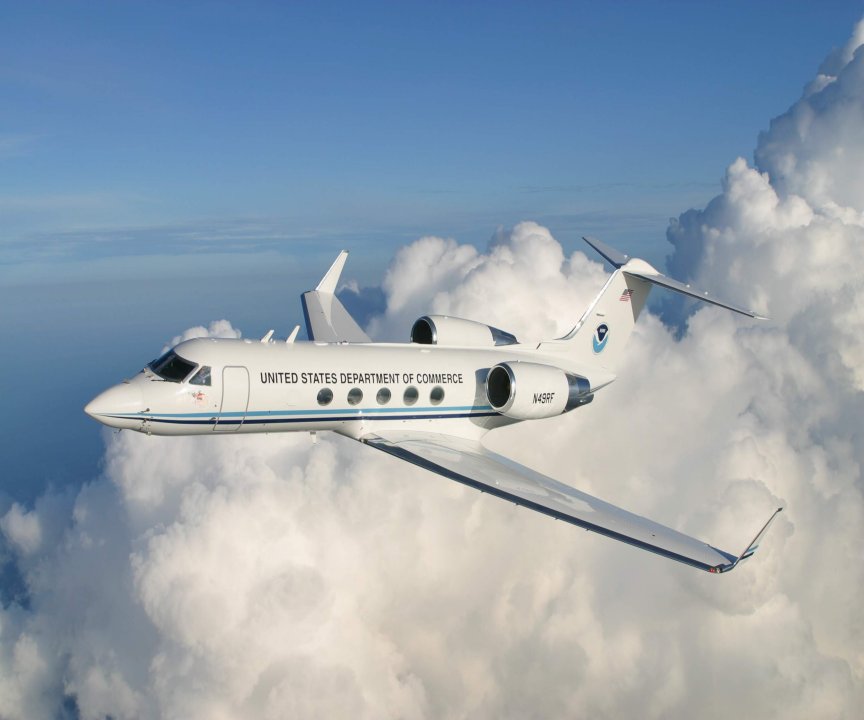The
Gulfstream IVSP Sees Inside Fabian

The
NOAA Gulfstream IV-SP
(G-IV) flew into the eye of Hurricane Fabian,
a Category 4 storm, on September 1st, 2003.
The aircraft launched from St. Croix at 1251
EDT and landed back in St. Croix at 1607 EDT.
On September 1st, Fabian was located about 450
miles northeast of the U.S. Virgin Islands.
From Air Force Reconnaissance aircraft reports,
the storm slightly intensified from 946 mb at
1 pm EDT to 942 mb at about 3 pm on September
1st. The five-person crew, all from AOC, were
testing the aircraft response to meteorological
conditions near the core of a strong hurricane.
Flying
at 41,000 feet, and approaching Fabian's eye
from the southwest, the crew noted a well-formed
eye on radar, stronger on the north side than
on the south and west. Arriving at a point about
50 miles south of the eye, after thorough analysis
of the storm using radar, they decided to head
for the center. Once through the south eyewall,
the pilots turned to the southwest over the
Fabian's circulation center, and the crew released
four dropwindsondes
(more information about dropwindsondes can be found at the University Corporation for Atmospheric Research web site) while inside the eye. These dropsondes used
GPS navigation and meteorological sensors to
measure temperature, humidity, pressure, wind
direction and wind speed as they descended in
Fabian's eye. One dropwindsonde
measured a low-altitude wind gust of 71.2 m/s,
or about 138 knots, and all of the sondes inside
the eye measured surface pressures below 950
millibars. The G-IV
exited the eye to the southwest.
The
crew's experience up to this point was smooth
to light chop everywhere exept the eyewalls,
moderate turbulence in the eyewall, so they
decided to fly the second objective, surveying
the area between eyewall and first rainband.
The aircraft tracked first northwest, then southwest
keeping the eyewall reflectivity maximum on
the 25-mile radar ring. While flying the survey
pattern outside of the eye, the eyewall became
complete on the south side to form a perfectly
closed eye with a 20 mile diameter. This radar
information was relayed to the Air Force Reconnaissance
plane, Teal 25, who was headed toward the center
from the northeast. Completing the eyewall survey
pattern west of the center, the G-IV
crew headed back to St. Croix.
|
David
Brogan
with DropSonde |
|
|
|
|